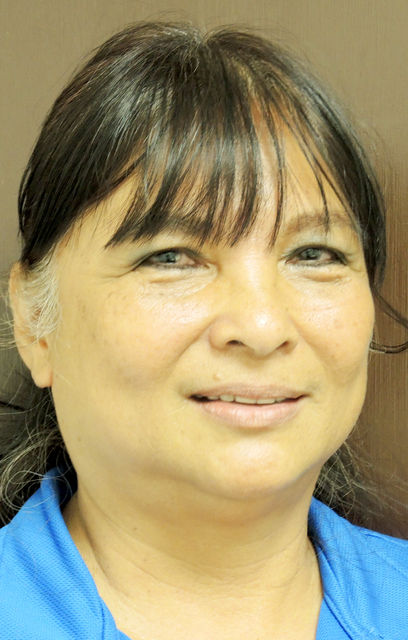LIHUE — When the state of Hawaii asked Stephanie Gersaba if she would be willing to foster and then adopt her three grandsons, she knew she needed to be there for them. “First of all, they’re family, and to me
LIHUE — When the state of Hawaii asked Stephanie Gersaba if she would be willing to foster and then adopt her three grandsons, she knew she needed to be there for them.
“First of all, they’re family, and to me family is so important,” she said. “We were taught to be together. To me, my kids are the most important people in the whole wide world and my grandkids top the list and so I couldn’t let it go.”
Children placed in the child welfare system benefit from being with family members while group placement is the least favorable position for them, according to a policy report issued by the Annie E. Casey Foundation.
“The state of Hawaii is a leader in placing children with relatives when they must be removed from their family homes,” Department of Human spokeswoman Kayla Rosenfeld wrote in an email. “Hawaii also does extremely well in preventing institutional placements of children.”
In Hawaii, 92 percent of children in foster care are living with family members. The report also found that within the U.S., 40 percent of youth who live in group settings while in the child welfare system have no clinical need to be there.
Research also found that such settings can be harmful to their development of nurturing attachments.
Nationally, 84 percent of children in foster care are living with family members and 14 percent are in group facilities.
Having fostered her first grandson in 2005 when he was 3, Gersaba understands the need for family in children’s lives.
“For the kids to know their family, their roots, it’s very important,” she said. “Not to say that strangers won’t do a good job too, but family, you have all these brothers, sisters, cousins, aunties, uncles that’s all going to come forward and help and they’re going to know their family, their roots.”
At the end of April, there were 65 children in foster care living on Kauai. Out of those, 62 are in a family setting living with licensed people formerly referred to as licensed foster parents, according to the Hawaii Department of Human Services.
Of the 62, 24 children are placed with relatives.
“Three children are in specialized treatment facilities that can better meet their emotional, behavioral and mental health needs,” Rosenfeld said. “All children taken into foster care are placed in family homes and, whenever possible, in homes with relatives, kin or hanai.”
The policy also offered ways government leaders, private providers, judges and policy makers can improve the livelihood of children living in group placement, in addition to ways communities can provide more services to parents and children under stress in their own homes.
This is done so children have better chances of reuniting with their birth parents to maintain bonds important for their growth.
Some of these methods include increasing service opportunities, strengthening family pools, keeping residential treatment short with the family in focus and require justification for restrictive placement in the group facilities.
“Kids who grow up in families have the best chances for success through life,” said Ivette Rodriguez Stern, Hawaii KIDS COUNT project director at University of Hawaii Manoa in a report. “Research shows that having secure attachments provided by nurturing caregivers is critical to a child’s healthy physical, social, emotional and psychological development. Young people who don’t grow up in families are at greater risk for poor outcomes as they grow up, such as being arrested.”
In Hawaii, when the need for a child to be removed from his or her home becomes apparent, CWS social workers discuss with the family, possible relatives or friends who may be available as placement options. When a family member or other kin is agreed upon, the CWS can issue a child specific licence for the family, usually within the same day, according to Rosenfeld.
Earlier this year, Hawaii also began a pilot project on Oahu called the Crisis Response Team, which is dispatched when there is a high chance of a child needing foster care, Rosenfeld said.
Hawaii was also recently approved to use federal dollars to help prevent the placement of children in foster care and to create permanency for those who are in the foster care system.
The CWS offers two community-based drop-in centers to help individuals gain the family services they need. The two centers are Hale Hoomalu on the island’s Eastside and Nana’s House on the Westside, which offer budgeting classes, child care, counseling, parenting classes and assessments which are rooted in Hawaiian values and culture.
Gersaba is glad to see her grandchildren happy to be living with her and being around other family members.
“They love it,” she said. “They’ve adjusted. They’ve come to like it, they wouldn’t want to go anyplace else.”


